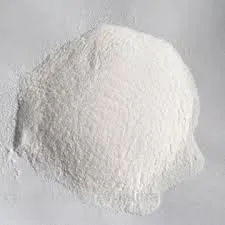
નવેમ્બર . 06, 2024 20:33 Back to list
hpmc density
Understanding HPMC Density Importance and Applications
Hydroxypropyl methylcellulose (HPMC) is a widely used cellulose derivative in various industries, including pharmaceuticals, food, construction, and cosmetics. One of the critical properties of HPMC is its density, which plays a significant role in determining its performance in different applications. This article explores the concept of HPMC density, its influencing factors, and its importance across various sectors.
What is HPMC Density?
HPMC density refers to the mass of HPMC per unit volume. It is a significant parameter that affects the material’s flow characteristics, solubility, and viscosity. The density of HPMC is influenced by several factors, including the degree of substitution (the proportion of hydroxypropyl and methoxy groups), the molecular weight of the polymer, and the moisture content. Understanding these factors is essential for optimizing HPMC for specific applications.
Factors Influencing HPMC Density
1. Degree of Substitution (DS) The DS affects the hydrophilicity and solubility of HPMC. A higher degree of methoxy substitution generally leads to increased density due to the additional mass contributed by the methoxy groups. Conversely, an increase in hydroxypropyl groups can reduce density as they contribute less to the molecular weight.
2. Molecular Weight HPMC is available in various molecular weights, which significantly influence its density. Higher molecular weight HPMC typically has a greater density, affecting its rheological properties. Choosing the appropriate molecular weight is crucial depending on the application requirements, whether for thickening agents or film-forming agents.
3. Moisture Content HPMC can absorb moisture from the environment, which can also modify its density. Compounds with higher moisture content will have a lower density on a dry weight basis, leading to variations in application characteristics, such as the consistency of mixtures in food and pharmaceuticals.
hpmc density

Importance of HPMC Density in Applications
1. Pharmaceuticals In drug formulation, the density of HPMC is vital for controlling the drug’s release rate and enhancing bioavailability. It is used in matrix systems where a consistent and predictable release of active ingredients is required. Understanding HPMC density helps formulators develop precise dosage forms, ensuring efficacy and safety.
2. Food Industry HPMC is employed as a thickener, emulsifier, and stabilizer in food products. The density influences the mouthfeel, texture, and overall quality of food products. For example, in gluten-free baking, HPMC helps to improve the texture and moisture retention, which is particularly important for consumer acceptance.
3. Construction In construction, HPMC is used as a binder and film-forming agent in dry-mix mortars and adhesives. The density affects the workability and adhesion properties of these materials. Ensuring the right density is key to achieving the desired mechanical strength and durability.
4. Cosmetics HPMC serves as a thickening agent in creams and lotions, improving application and stability. The density contributes to the texture and viscosity, ensuring a pleasant application experience for consumers.
Conclusion
HPMC density is a fundamental characteristic that impacts its functionality across various industries. By understanding the factors that influence density, manufacturers can optimize HPMC for specific applications, ensuring better performance and customer satisfaction. As industries continue to evolve, the significance of HPMC density will only grow, making it a pivotal area of study in material science and formulation development.
-
Unlocking the Benefits of HPMC Products: A Gateway to Versatile Applications
NewsAug.07,2025
-
Unleashing the Potential of HPMC Ashland: A Comprehensive Look
NewsAug.07,2025
-
Tile Bonding Cellulose: The Key to Superior Adhesion and Durability
NewsAug.07,2025
-
Hydroxypropyl Methylcellulose Powder: The Versatile Component in Modern Pharmaceuticals
NewsAug.07,2025
-
Hydroxyethyl Cellulose: The Versatile Solution for Various Industries
NewsAug.07,2025
-
Hydroxyethyl Cellulose (HEC): The Versatile Polymer for Various Applications
NewsAug.07,2025







